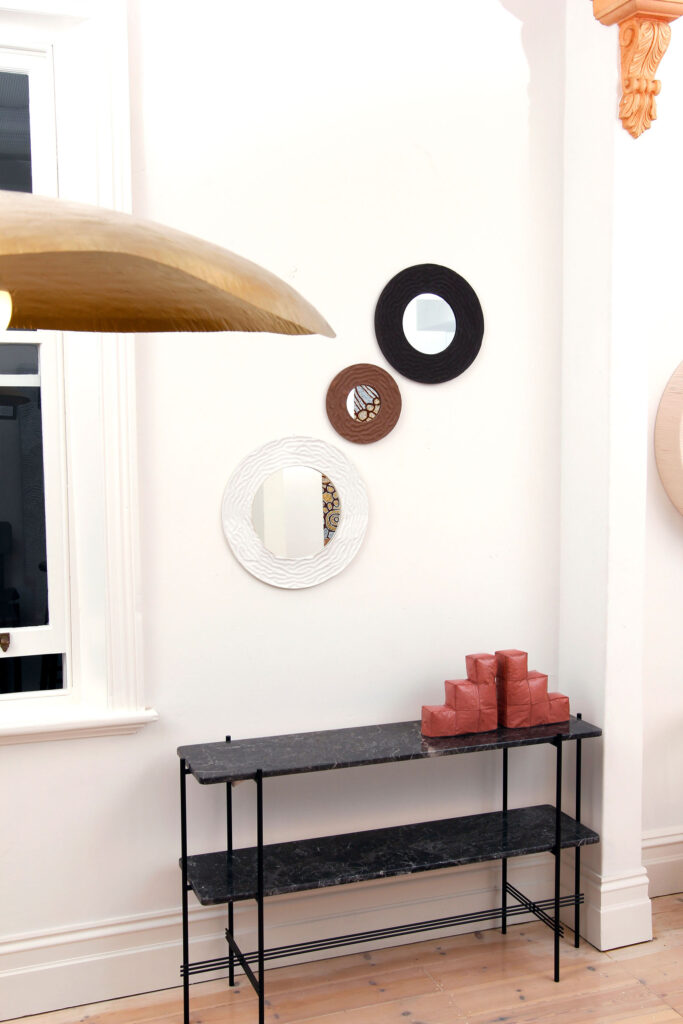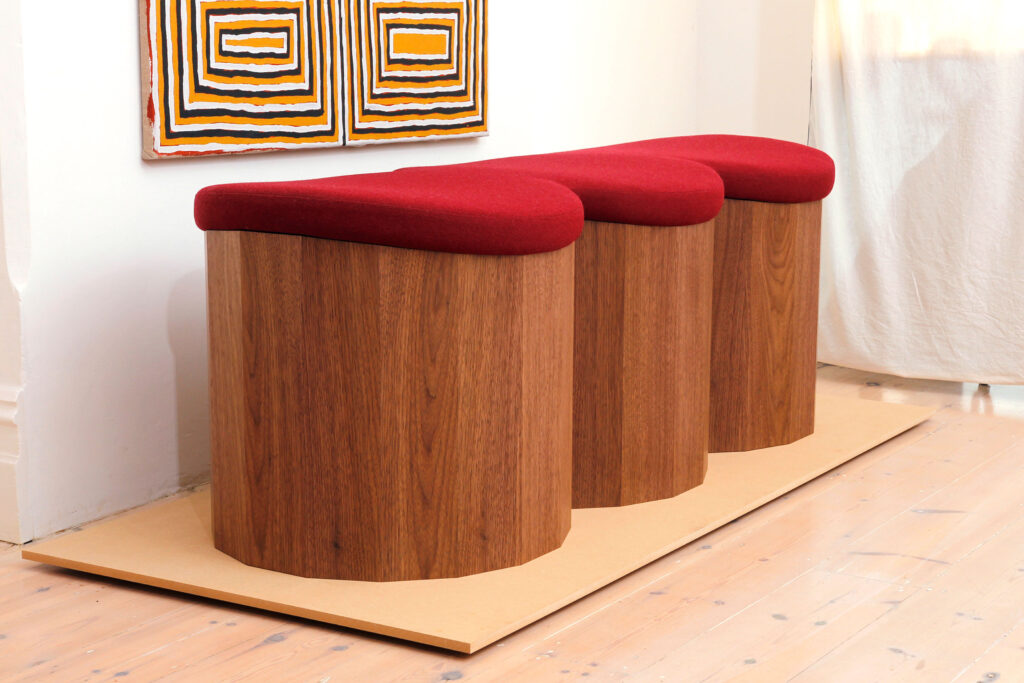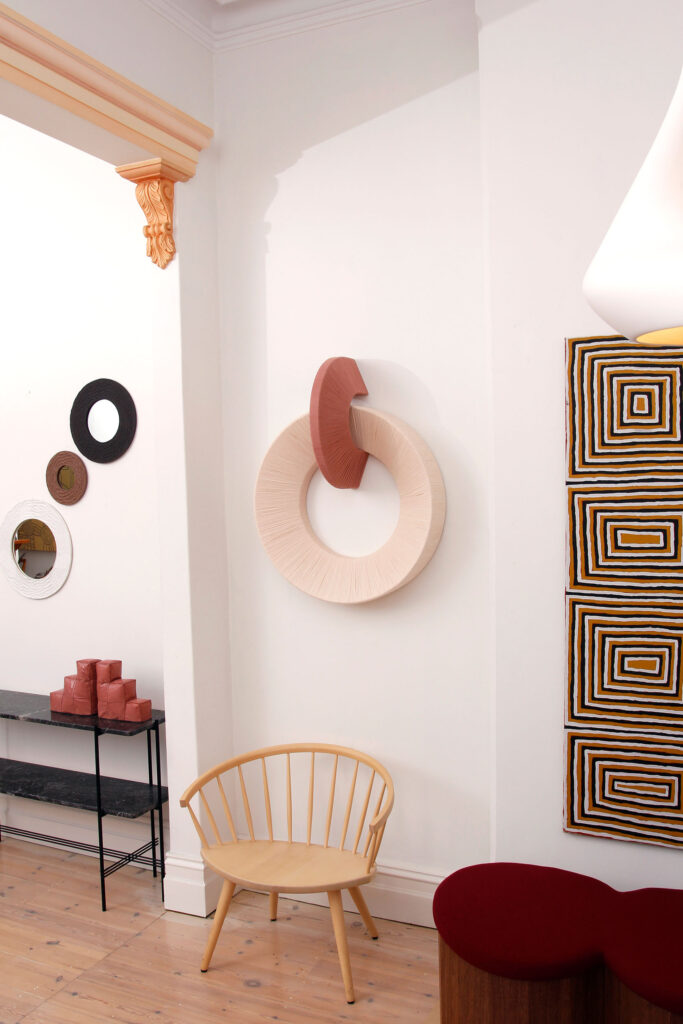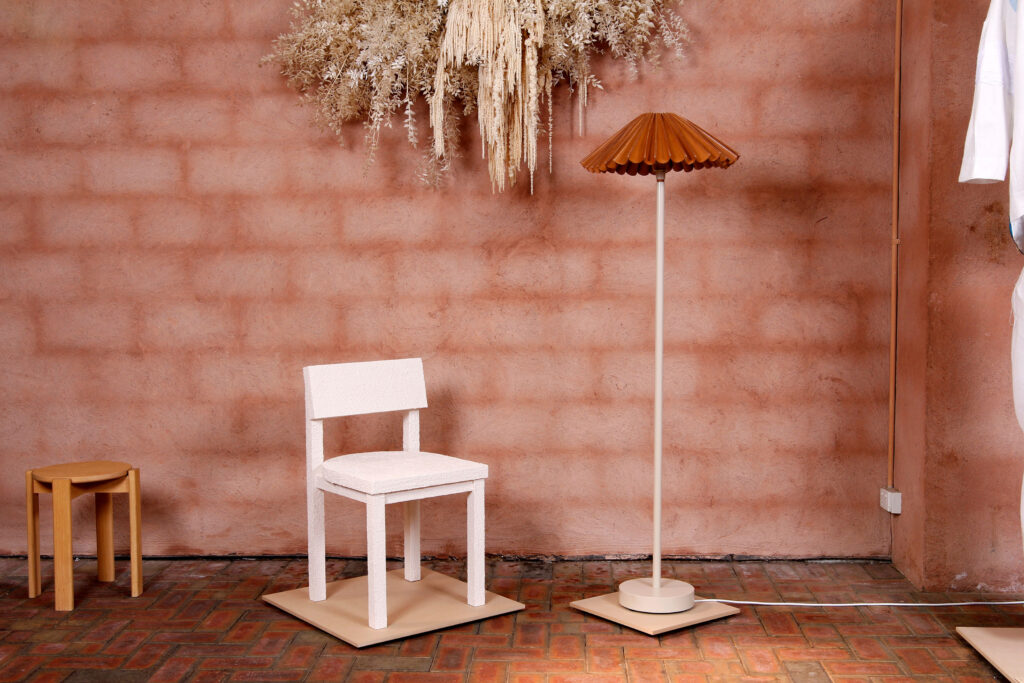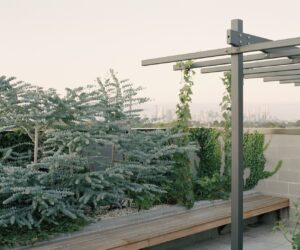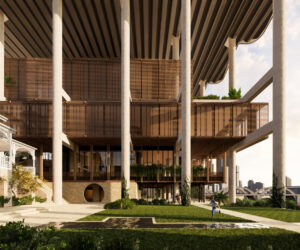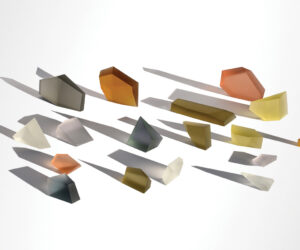Surface Two: a textural exploration of materials from South Australian makers
Recently exhibited as part of the South Australian Living Artists Festival (SALA), Surface Two brought together an array of Adelaide-based makers to exhibit against the stunning backdrop of furniture showroom 1000 Chairs.
Surface Two, now in its second annual iteration after Surface 2020, curated by JamFactory alumnus Calum Hurley saw exhibitors respond physically, texturally and visually to the theme of ‘surface’. Furniture makers, ceramists, glass blowers, florists, leather-workers and sculptors each responded to the brief in a unique way, some expanding on their current practice, with others taking it as an opportunity to venture on a different path.
Surface Two is now closed to the public, but is visible digitally through @surface_exhibitions on Instagram. The work was photographed in-situ at 1000 Chairs and is perfectly balanced with pieces from local and international designers, as well as a number of paintings from Desert Art (not related).
Anna Horne, a graduate of Adelaide Central School of Art, used her signature fabric moulded concrete to explore materiality, process and the transience of the physical world through the medium of sculpture. Contradiction and opposition are central themes in Horne’s practice, often playfully explored through the juxtaposition of opposing material forces.
In the making of sculptures for Surface Two, Horne uses ‘flexible’ materials, such as table-cloth plastic, found items and textiles to create moulds to cast commonplace industrial products such as concrete, plaster and metal. The resulting objects capture and solidify the physicality of a process playing with gravity.
Glass artist Alexandra Hirst displayed a series of Native Botany Vases, which came about after hiking through remote areas of the Northern Territory having stumbled upon a number of remarkable plants. “I wanted to showcase a collection of Australia’s stunning flora that are often overlooked. It was fitting to depict these plants as etchings on top of an irregular and organically shaped hand blown glass vase. The beauty of transplant glass is that these botanical etchings are overlaid on top of one another, manifesting in a three dimensional drawing of the Australian bush.
It wasn’t until I started my exploration of these native botanicals that I realised how much of the Australian landscape has been altered by invasive plant species. I decided to develop an ‘Invasive Botany Vase’ series, incorporating plants that have been introduced to Australia from other parts of the world.
No one can deny that the plants depicted in this work, both native and invasive, hold beauty and significance for many Australians. While ‘invasive’ is a word that often has negative connotations, this assembled collection is not meant to offend, but rather encourage conversation about how we can preserve and celebrate our native landscapes whilst still enjoying the incredible diversity of botany that has been imported from other parts of the world.”
Calum Hurley, alumnus of JamFactory’s esteemed Associate Program (Furniture) has recently expanded his time focus from designing and making to include curating. “It brings a great sense of satisfaction to bring people together; to create these opportunities”. Having organised Surface 2020 as a showcase for the first year Associates of JamFactory, he expanded the net to included all Adelaide creatives and undertook Surface Two as a solo endeavour. Having exhibited in Melbourne Design Week in 2020, and attending again in 2021, the focus of local seemed more important than ever, and celebrating South Australians in South Australia was the genesis of Surface Two.
Along with curating, Hurley exhibited Dining Chair, Glacial, the fourth in the series of architecturally inspired dining chairs that explore materiality and texture. This iteration drew inspiration from two sources, the grand masse of glaciers, and the equally textured and imperfect plastering technique, stucco. “The grandness and textures of glacial fragments were the first touch point in developing this piece, though through applying this to an interior object, it transitioned to an exploration of the traditional applications of stucco plastering. In the same methods as stucco by starting with an internal structure, this piece was built up in multiple layers using Jesmonite until the desired, textural effect was achieved. Made with the same strength and woodworking techniques as the hardwood versions, this chair is fully functional, though fault-lines and shifts may occur over time.”
Isabella McRae is a designer-maker specialising in Leather work. As a second generation leatherworker, she balances traditional techniques with a modern design sensibility. With the intention to bring leather into the contemporary design sphere, Isabella produces functional and sustainable pieces under her label, Stuff by Glad. For Surface Two her stunning Miniato Lamp “is the result of a shift in my design focus away from currentness and towards longevity: a shift which is inevitably leading my craft away from fashion and towards objects. This piece embraces retro aesthetics, reimagining a nostalgic form for a present-day audience.”
On the back of a fruitful year, JamFactory Furniture Studio Production Manager, Vogue Living VL50, and The Design Files Award nominee Ivana Taylor showcased a soft, sculpture light from her Wrapped Gestures series; a body of work exploring the functional and aesthetic force of wrapping. “Growing up, I witnessed my mother, who is a costumier, transform sketches into garments and costumes from every possible period and genre for film, TV, theatre and advertising. This led me to love textiles and dressing up but also to understand costume as an experiential prop and a kind of fulcrum, designed to trigger a different way of acting, thinking and being. These sculptures are like costumes and props but rather than getting hidden in a chest, are celebrated on the wall as objects and visual anchors that could invite you to redress your own perception of yourself and the world in the same way that you did when you dressed up as a child.”
Experimental florist, Jessica De La Pair for working with an array of mediums to create bespoke floral arrangements. Alongside her brick and mortar retail space, IvyHouse, Jessica has ventured into exhibition work for the first time with a quartet of sculptural heads; Floral Mind. These pieces are an insight into the places Jessica grew up and each represent a different stage of her life; from sadness, denial, and isolation to when she made conscious decisions to bring happiness, acceptance and progression to the forefront.
Fellow The Design Files Awards nominee, Jordan Leeflang’s work has a spatial awareness and structural integrity that is firmly grounded in his interior architecture training. His furniture and products are designed and constructed with three tenets in mind: pleasing proportions, complementary materials, and meticulous craftsmanship. Bumper Bench combines angled timber planes with rich, rounded upholstery as a collision of opposites. A continuation of Leeflangs’ design language – subtlety of form, faceted timber and bold colour. “The perfect spot for three (vaccinated) friends” he says.
Lilly Buttrose, who started her arts practice in textiles, with a focus on basketry weaving and dyeing, returned to her roots for her A small dictionary of Geology fragments series. She played with embroidery on silk recreating and abstracting small drawings found in a reference book “Dictionary of Geology” D.G.A. Whitten with J.V.R. Brooks. Lilly stitched patterns that enlarge the textures of fossils, rocks and minerals found in the text. Lilly’s production work celebrates jewellery and fabric with a continued effort to bring them together.
“Relics of habitats once worn and lived in reconfigure into Mineral Tufts”. Couple and collaborative duo, Angela Carrig and Nathan Peacock’s observations take an interest in the undone state. Their work for Surface Two combines their interests in resourcefulness and repurposing. The clothing is made from a base of cotton curtains previously hung at the Mineral Tufts home, once embroidered by Jason van Hamburg and patched by Christopher Arblaster. Creases which formed when in storage have been made permanent though sewing darts all over – sewn into the suit not to shape to the body, but to make permanent memories of the storage box. Combing patches of remnant and gifted fabrics with ceramic buttons made by the duo, the deconstructed mannequin is adorned with ceramic fragments found in a creak bed near their home.
Ceramic and object designer Xanthe Murphy’s Ripple Mirrors explore the meditative act of tracing patterns in sand; an ephemeral moment captured forever in clay. Designed as an art object for the home this wall mirror is a reminder to look for calm within, made in a considered pallet inspired by the Central Australian landscape. This range develops upon Xanthe’s current work encompassing the ‘ripple’ texture.
The catalysts for this series was the award winning Ripple Collection made in collaboration with Jordan Leeflang and a recent month long artist residency at Central Craft Alice Springs.
